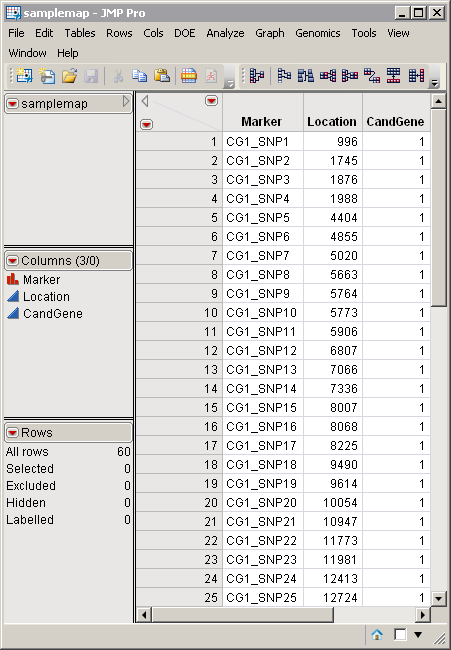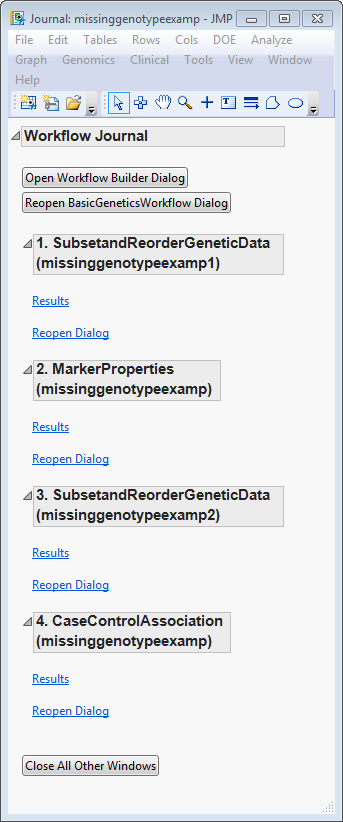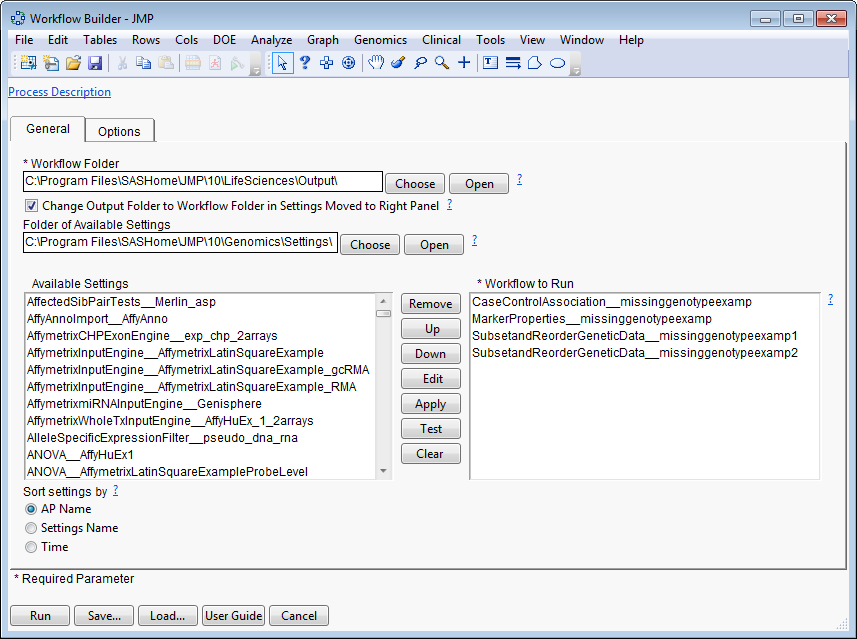The
Basic Genetics Workflow
process builds and runs a basic
workflow
using a data set containing SNP
genotype
for a sample of unrelated individuals. This automated process uses the
Marker Properties
,
Missing Genotype by Trait Summary
,
Subset and Reorder Genetic Data
,
Case-Control Association
and the
P
-Value Quantile Plotter
processes to perform the following analyses:
|
1
|
computations of various properties about the
SNPs
, such as
minor allele
frequency (MAF), proportion of missing genotypes at each SNP, and statistics for the test of
Hardy-Weinberg equilibrium
(HWE),
|
|
4
|
tests for
association
of individual SNPs with a
binary trait
using the Cochran-Armitage trend test, and
|
|
5
|
plotting of observed
p-values
from the trend test versus expected
p
-values under the null
p
-value
distribution
.
|
One wide-formatted SAS data set is
required
to run the
Basic Genetics Workflow
process. This data set must be formatted like those used in
Affymetrix SNP CHP Input Engine
or
Illumina SNP Input Engine
:
|
•
|
|
•
|
The
samplegmdata.sas7bdat
data set, described in
Sample Genetic Marker Data
, was computer generated and consists of 1000 rows of individuals with 130 columns corresponding to data on these individuals. This is a wide data set; molecular entities are listed in columns, and samples are listed in rows. Data for 60 markers is presented in the two-column
allelic
format in columns
ma1
-
ma120
. This data set also lists
pedigree
data, data for 4 different quantitative
traits
, and disease status.
The
samplegmdata_missgeno.sas7bdat
data set is shown below. This data set was generated by making the following modifications to the
samplegmdata.sas7bdat
data set:
|
•
|
the marker data was converted from the two-column allelic format to the one-column
genotypic
format (60 columns,
g1
-
g60
), in which the alleles are delimited by a “
/
”,
and
|
A second data set, the
Annotation Data Set
, is
optional
. This data set contains information such as gene identity or chromosomal location, for each of the markers. The
samplemap.sas7bdat
annotation data set
serves as an example. It was computer generated and identifies markers, location, and gene identities. A portion of this data set is illustrated below. This data set is a tall data set; each row corresponds to a different marker.
Note
: The top-to-bottom order of the rows in the annotation data set matches the left-to-right order of the columns in the input data set. This correspondence is required for markers to be matched appropriately.
Both the
samplegmdata_missgeno.sas7bdat
data set and the
samplemap.sas7bdat
annotation data set
are located in the
Sample Data\Genetics
directory included with JMP Genomics.
For detailed information about the files and data sets used or created by JMP Life Sciences software, see
Files and Data Sets
.
When you click
, the
Basic Genetics Workflow
process begins by opening the
Workflow Builder
. The
Workflow Builder
builds a
settings file
for each process containing the information from the data sets and parameters specified in the
Basic Genetics Workflow
dialog
. Once the setting files are generated and saved, the individual processes in the workflow are sequentially opened, populated, and run. The results of the processes are saved in the specified output folder. Finally, a JMP
journal
, providing links to the workflow dialog and the results of each process, is generated. The Journal is shown below.
|
|
Click
to view the
Workflow Builder
.
|
The
Workflow Builder
dialog shows the settings for each of the processes in the workflow. You can select and edit individual settings to adjust your analysis.
|
|
Click
under any of the processes shown in the journal to view the output for those processes. For your convenience, links to default
Basic Genetics Workflow
processes are given below.
|



